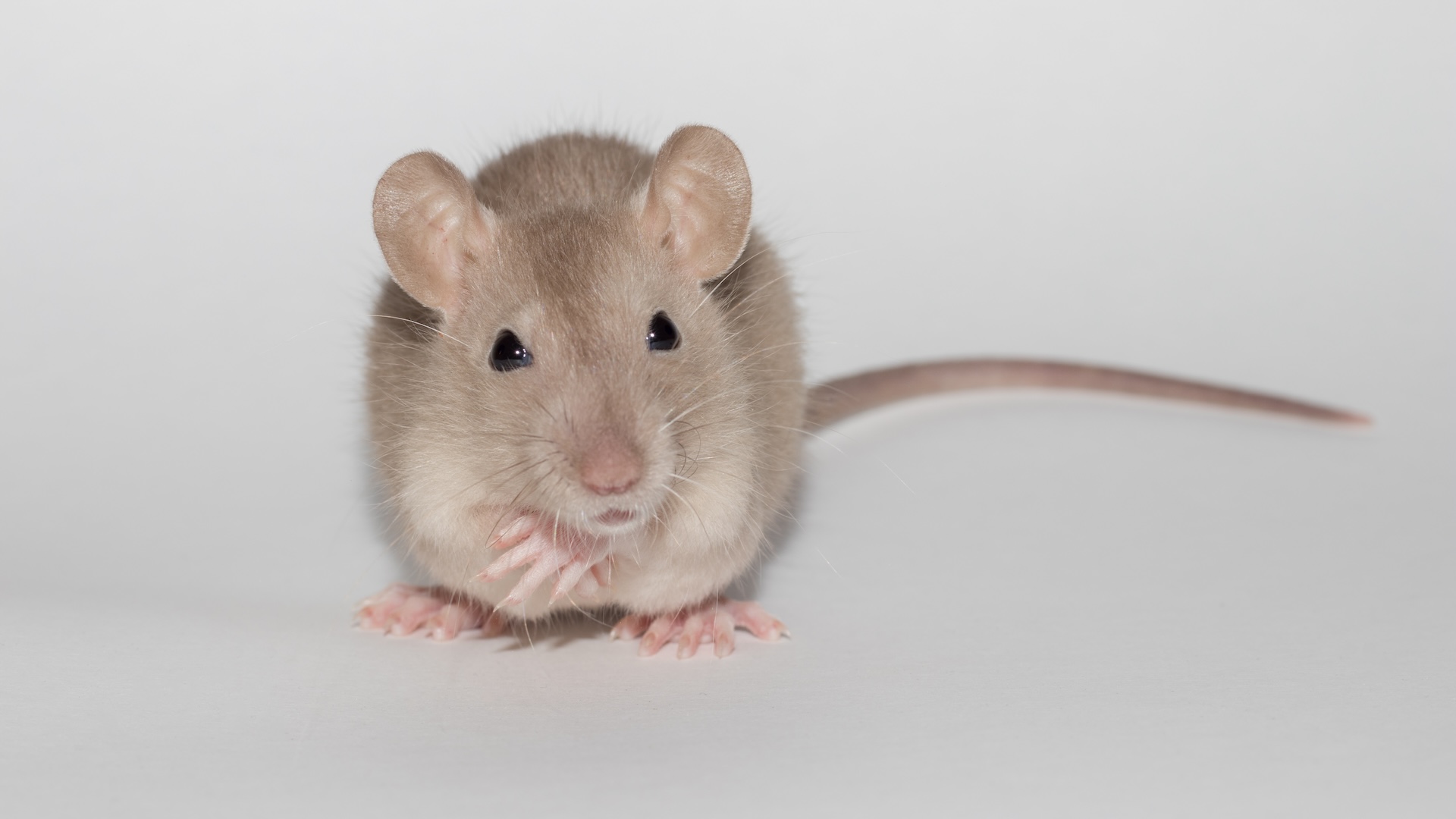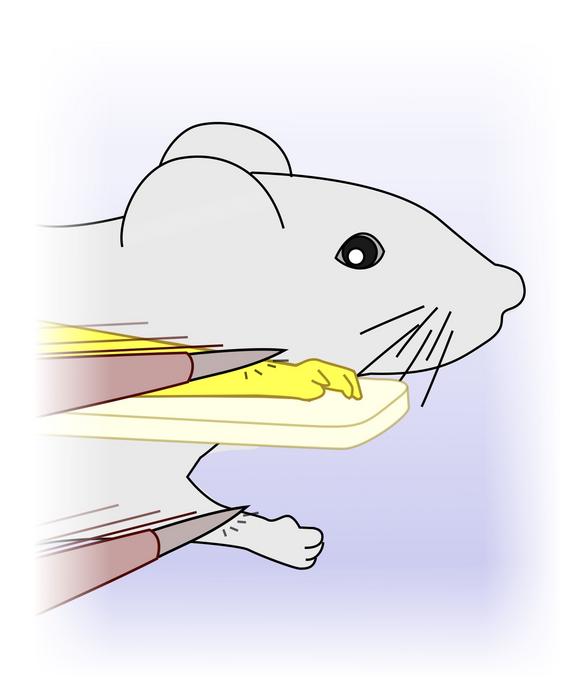'Rubber paw illusion': Mice can 'sense' artificial limbs, just as humans do
Scientists have introduced a new laboratory model that could help them study how artificial limbs can be better designed.

People with artificial limbs can come to sense their prosthetic as part of their body — and in a new study, scientists showed that lab mice can also experience this same type of "embodiment." The researchers say that the work could inform the design of better artificial limbs for people in the future.
Through this line of research, "we are bringing a toolkit for … neural engineering in mice [and could] discover new ways to control a prosthesis," said senior study author Luc Estebanez, a researcher who studies sensorimotor integration and plasticity at the Université Paris-Saclay.
We all have an internal map of our bodies that helps us track how they're moving, what they're touching and how they're interacting with the environment. Ideally, when someone loses a limb and gains a prosthetic, they incorporate it into this mental map, internalizing it as a part of their body. This sense of ownership and control is gained through a process called "prosthetic embodiment."
However, many people who use prosthetics encounter difficulties with embodiment. Additionally, there are some psychiatric disorders — such as schizophrenia and severe depression — in which people's internal maps grow fuzzy and they lose sense of their bodies, which can contribute to a lack of care for their own bodies and a higher risk of severe accidents.
In the new study, published Thursday (June 5) in the journal PLOS Biology, researchers at the Université Paris-Saclay developed a new model to study limb embodiment using lab mice. This model could enable researchers to study the neuroscience behind embodiment more closely, and maybe even design enhanced prosthetics for those who have lost limbs.
Most studies of prosthetic embodiment feature human subjects and use assessments, like questionnaires, and brain scans. But this approach limits how we can study more granular changes that unfold in the brain during embodiment.
Get the world’s most fascinating discoveries delivered straight to your inbox.

"Embodiment is a multifaceted phenomenon, encompassing neural, behavioural and phenomenological dimensions," said Tamar Makin, a professor of cognitive neuroscience at the University of Cambridge who was not involved in the study. "The latter — the subjective sense of body ownership — is arguably the most critical, and also the most inaccessible in nonverbal species," such as mice, Makin told Live Science in an email.
Prosthetics have been designed to meet the immediate needs of humans first, but that leaves "a blind spot regarding neurotechnologies in mice," said Estebanez. "All the tools are there, but the robotics and the psychology tests that are related to them have never been developed."
So Estebanez and his team wanted to see if lab mice would exhibit similar behaviors to humans in terms of how they internally represent their own bodies. That could open the door to studying how embodiment works in more detail than is possible with human subjects.
To this end, the researchers employed the "rubber-hand illusion," a well-known psychology experiment in which one arm is hidden behind a barrier and a rubber arm is placed at the subject's side, where they can see it. Then, an experimenter runs a brush over both the rubber arm and the subject's real arm at the same time. This creates the illusion that the subject is feeling through the rubber hand — so when the experimenter suddenly raises a hammer to strike the rubber arm, most subjects show a visceral fear reaction, even though they're totally safe.
In the mouse study, the researchers used a rubber paw instead of a hand. By following and quantifying the rodents' pupil movements, they found that the mice reacted in a similar way to humans when the rubber paw was threatened by the rapid approach of an arrow-like object. In short, mice fell for the illusion too.
Interestingly, the mice did not react in the same way when the rubber paw was replaced with a simple block, again replicating what has been seen in human studies. That indicates that the mice don't just need to see the fake paw — it must also look similar to their real paw.
"To really study embodiment, you need to look at mice in a way people don't look at mice," Estebanez argued. "If you take the full consequence of the study, it suggests that mice actually have a very rich cognitive representation of their body, which is super exciting."
The research also suggests that mice could be used to answer deeper biological questions about which parts of the brain actually encode embodiment. Such studies could help those with prosthetics or with disorders that affect embodiment, the researchers say.
The new model is also unique in that it will enable scientists to stimulate the mouse brain in targeted ways, and switch specific brain cells on and off in ways that cannot be performed in humans. They envision that such a model could then be used to design better brain-computer interfaces — devices that link the brain's electrical activity to an external device — which could improve designs for advanced neuroprosthetics.
Makin, however, remains skeptical of how this model can actually be used in the context of neuroprosthetic research.
"I would advise caution in drawing links to neuroprosthetics," she said. "The limb in this study is passive, with no voluntary control or sensorimotor loop. Most of the challenge in neuroprosthetic embodiment arises from the burden of control, which is precisely what this model does not address."
Estebanez noted that, in another project, the team developed a tiny prosthesis for their mice that they can control through a brain-computer interface. "That's where things become interesting," he said. "We would like to probe the level of embodiment we manage to trigger through motor controls and [this mini-prosthesis has now] become part of a toolkit for neuroengineering in mice."
Psychology quiz: What do you know about psychology's most infamous experiments?

Jennifer Zieba earned her PhD in human genetics at the University of California, Los Angeles. She is currently a project scientist in the orthopedic surgery department at UCLA where she works on identifying mutations and possible treatments for rare genetic musculoskeletal disorders. Jen enjoys teaching and communicating complex scientific concepts to a wide audience and is a freelance writer for multiple online publications.
You must confirm your public display name before commenting
Please logout and then login again, you will then be prompted to enter your display name.


